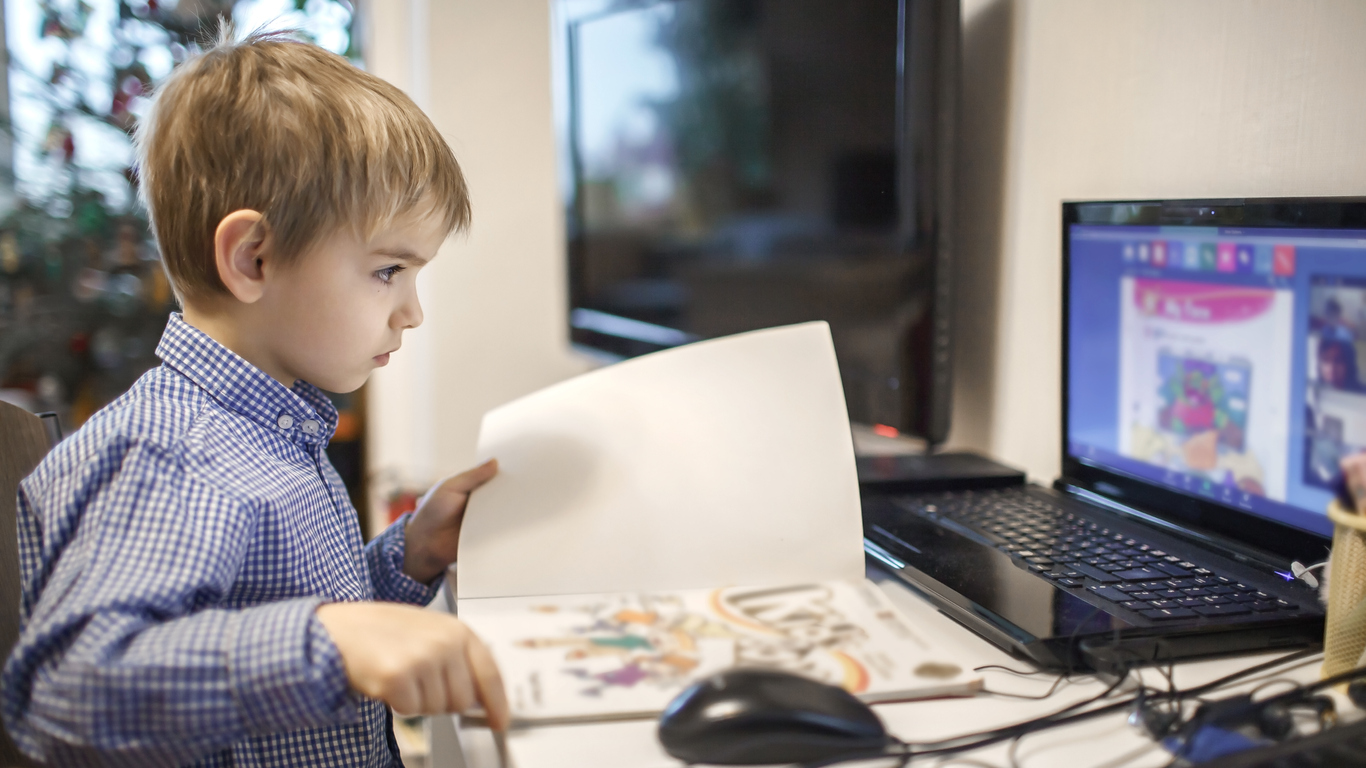
After nearly a year of responding to the COVID-19 outbreak and now coming to the end of a full half-term of remote education, we invited teachers to reflect on what works best for them when teaching remotely.
Keep communicating
Communicate with your team – meet for regular conversations to keep everyone in the loop. It’s not only helpful for reflecting on practice and getting tips from peers, but it’s good for wellbeing too. And remember to ensure that your support staff also have access to the resources and know the content being delivered each lesson. Having the information ahead of time can be very helpful for all parties.
Teaching staff at Waltham Holy Cross Primary Academy in Waltham Abbey
Communicating with parents is vital. We wanted them to understand what steps we were taking to continue to educate their children remotely and how it might affect them. So, we created videos to explain the new processes and procedures to parents and to also get them on board with the new way of working.
We also asked staff’s opinion on how they were finding the training, which parts needed improving and what else they felt they needed more knowledge and skills in. We discovered that there was some anxiety around this new way of working but after further training, engagement with our online platform started to increase and confidence grew.
Melios Michael, Hamstead Hall Academy in Birmingham
Support your students’ wellbeing
A reassuring smile, telling them you’re proud of them or inviting them to share their work with the class – these are moments that are not lost in the remote classroom. As much as we are focused on providing a high standard of remote education, the importance of maintaining teacher-student relationship remotely cannot be understated. While the curriculum is fundamental, learning is social and emotional as well as academic. This focus on the whole child that we strive for in our day-to-day teaching is just as vital in the virtual classroom.
Frances Taylor, Jerounds Primary Academy in Harlow
If you’re doing live lessons remotely, build time into your lesson plans to develop relationships and give praise. This gives the children a chance to socialise with their peers and helps maintain a sense of normality.
Teaching staff at Waltham Holy Cross Primary Academy in Waltham Abbey
Encouraging younger children to engage online
Possibly one of the most challenging aspects of teaching remotely to primary aged children, is making it as fun and engaging as possible. As a year 1 teacher, teaching year 1 in a classroom setting comes with the wonders of a vast array of resources, and a stimulating environment where pupils learn through hands on interaction with their teachers and peers. Take all of that away and place a pupil in front of a computer screen with limited resources and limited hands-on support, it becomes very tricky.
I find showing my face makes a big difference – seeing you in action is so much more engaging than listening to a disembodied voice. Speaking directly to your camera makes it feel more personal and helps to keep the children engaged. If you’re teaching live lessons, I’ve found that having your pupils’ camera on too can help engagement as you can bring them into conversations when you notice their attention drifting. I’ve also found that having an aesthetically pleasing backdrop helps with engagement – you don’t want to look like you are teaching from a dingy broom cupboard. Good lighting and a background that isn’t distracting is key.
Georgia Threadwell, Abbotsweld Primary Academy in Essex
Good planning is fundamental
It’s hard to plan for issues like a poor internet connection that day, or unexpected distractions in the child’s home. Instead, put your energy into the things you can control, so:
- plan your lessons in advance
- tweak them each day if the pupils have not quite understood the concept
- plan the questions you would like to ask the children
- have your concrete resources in front of you if you are going to be using them.
Even something as simple as saving your planning in a place that is easy to access when screen-sharing can help an online lesson to run smoothly.
Frances Taylor, Jerounds Primary Academy in Harlow
Don’t overcomplicate things. Mirror online and classroom curriculum coverage and adapt the lessons so that they can be taught both in class for children on-site and online for children learning at home. Keeping the content online as simple and easy to follow as possible will help learning flow.
Teaching staff at Waltham Holy Cross Primary Academy in Waltham Abbey
According to Education Corner, the average 6-year-old can pay attention on a particular subject for around 12-30 minutes, whereas 11-year-olds can stay focused for up to 55 minutes. Understanding these limits is key to planning remote lessons, chunking inputs into manageable small bursts helps to keep children engaged. Also, having regular breaks where pupils can take part in a quick talking task or quiz ensures lessons are still pacey and exciting. Regular brain breaks where pupils spend some time away from their screen throughout the school day are important too.
Georgia Threadwell, Abbotsweld Primary Academy in Essex
Get help with remote education
The Department has published a package of remote education support for schools on GOV.UK, including advice for supporting pupils with SEN, ways to adapt your safeguarding policies, best practice teaching resources, and how to get help with technology.
We’ve also set up a page on gov.uk which has information for parents and carers to support their children with learning from home.